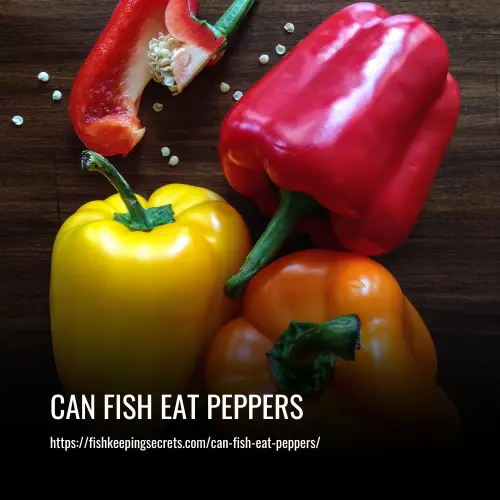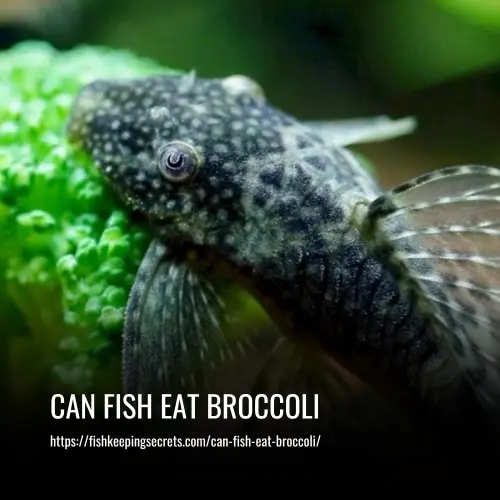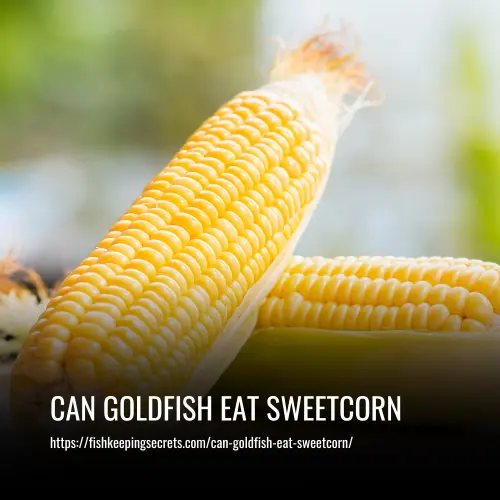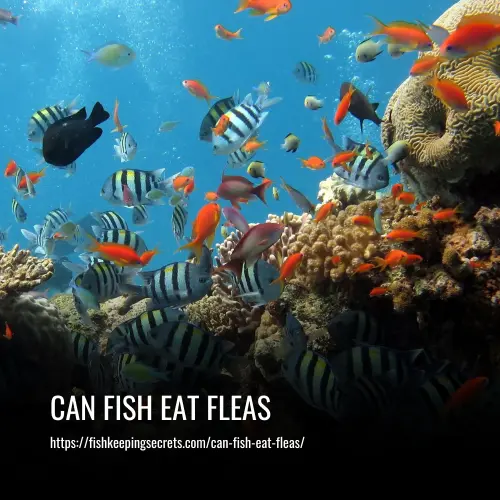Some fish may eat peppers, but it is not recommended to feed peppers to fish regularly. It is important to note that not all fish can tolerate spicy foods. Peppers can be too spicy for fish and may upset their digestive system. Additionally, peppers should be prepared and cooked before feeding them to fish to ensure they are easier to digest and to avoid any potential negative effects on their digestive system. It is best to stick to a balanced diet specifically formulated for fish.

Types of Fish that Can Eat Peppers
Some types of fish that can eat peppers include cichlids, tetras, and livebearers. These fish are known to have a diverse diet and can consume various types of fruits and vegetables, including peppers. However, it’s important to note that not all fish species can tolerate peppers or other spicy foods. It’s recommended to research the specific dietary needs and preferences of your fish species before introducing peppers into their diet.
Nutritional Benefits of Peppers for Fish
There are several nutritional benefits of peppers for fish:
1. Vitamins: Peppers, especially bell peppers, are rich in vitamins such as vitamin C, vitamin A, and vitamin B6. These vitamins help support the immune system and promote overall health in fish.
2. Antioxidants: Peppers contain antioxidants like beta-carotene and lycopene, which help protect fish cells from damage caused by harmful free radicals.
3. Color Enhancement: Peppers can enhance the natural coloration of fish, particularly red and orange varieties of peppers. Feeding fish peppers can result in more vibrant and visually appealing colors.
4. Digestive Health: Peppers are a good source of dietary fiber, which can promote healthy digestion in fish. Fiber aids in the movement of food through the digestive tract and can prevent constipation.
It’s important to note that not all types of peppers are safe for all types of fish. Some species may have different dietary requirements or sensitivities. It’s best to research and consult with an expert to determine the specific nutritional needs of your fish before introducing peppers or any other new food items into their diet.
How to Feed Peppers to Fish
Feeding peppers to fish can be a healthy and nutritious treat for them. Here are some steps on how to feed peppers to fish:
1. Choose the right type of peppers: It is best to use mild peppers such as bell peppers or sweet peppers. Avoid feeding fish spicy peppers as they may be too hot for them to handle.
2. Prepare the peppers: Wash the peppers thoroughly to remove any dirt or pesticides. Remove the seeds and cut the peppers into small, bite-sized pieces. Ensure that the pieces are small enough for your fish to easily consume.
3. Offer the peppers to your fish: Place the pepper pieces into the fish tank or pond and observe how the fish react. Some fish may immediately start eating the peppers, while others may take some time to get used to the new food.
4. Monitor the fish: Watch your fish as they eat the peppers. If they seem to enjoy and consume the peppers without any issues, you can continue to feed them peppers as part of their regular diet. However, if you notice any negative reactions or digestive problems, it is best to stop feeding peppers to your fish.
Remember, peppers should only be given as a treat or supplement to your fish’s regular diet and should not be the main source of their nutrition. It is important to provide a balanced and varied diet to keep your fish healthy.
Advantages and Disadvantages of Peppers for Fish
Peppers can be a good addition to a fish’s diet, but there are also some potential drawbacks to consider.
Advantages
1. Nutritional value: Peppers are rich in vitamins and minerals, such as vitamin C and potassium, which can be beneficial for fish health.
2. Variety in diet: Adding peppers to a fish’s diet can provide variety and help prevent boredom or picky eating habits.
3. Natural color enhancer: Some types of peppers, such as red bell peppers, contain pigments that can enhance the natural colors of certain fish species.
Disadvantages
1. Digestive issues: Peppers can be difficult for some fish species to digest, especially if they are not accustomed to eating vegetables. This can lead to digestive problems, such as bloating or constipation.
2. Allergies or sensitivities: Some fish may have allergies or sensitivities to certain compounds found in peppers, which can cause adverse reactions or health issues.
3. Pesticide residue: Peppers are often treated with pesticides, and if not properly washed, these residues can be harmful to fish. It is important to choose organic peppers or thoroughly clean them before feeding them to fish.
Peppers can be a healthy addition to a fish’s diet, but it is important to introduce them gradually and monitor the fish’s response. Consulting with a veterinarian or fish expert is recommended to ensure the best diet for your specific fish species.
FAQs
No, not all peppers are safe for fish. It is important to avoid feeding fish spicy or hot peppers, as they can irritate the fish’s digestive system. Stick to milder varieties like bell peppers.
Fish can generally eat sweet and mild peppers, such as bell peppers, as they are not as spicy and contain beneficial nutrients. It’s best to avoid feeding fish extremely hot or spicy peppers, as they can be harmful to their digestive system.
Peppers should be blanched or cooked before feeding them to fish. This helps to make the peppers easier for the fish to digest and can prevent any potential issues with raw peppers.
Feeding fish peppers can provide them with essential vitamins and nutrients, such as vitamin C and beta-carotene. It can also add variety to their diet and promote natural foraging behaviors.
Peppers should be offered to fish as an occasional treat, rather than a staple of their diet. It is best to rotate different vegetables and fruits to provide a balanced diet.
While peppers can be a healthy addition to a fish’s diet, overfeeding or feeding the wrong type of pepper can lead to digestive issues. Always monitor the fish’s behavior after introducing a new food.
Feeding fish peppers can potentially enhance their color due to the presence of natural pigments in the peppers. However, it’s essential to maintain a balanced diet and not rely solely on peppers for this purpose.
Conclusion
In conclusion, fish can eat peppers as part of a balanced diet, but it is important to do so in moderation. Peppers can provide essential nutrients and antioxidants for fish, but feeding them too much can lead to digestive issues and potential harm. It is crucial to consider the specific species of fish and their dietary needs before introducing peppers into their diet.
Additionally, it is always best to consult with a veterinarian or aquatic specialist for personalized advice on the dietary needs of fish. Overall, while peppers can be a nutritious addition to a fish’s diet, responsible and informed feeding practices are essential to ensure the health and well-being of the fish.



